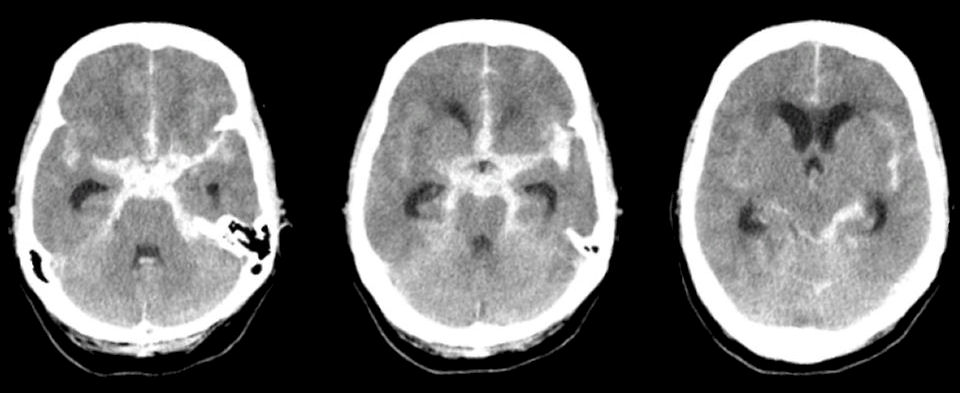
A 45 year-old man developed an explosive headache with nausea and vomiting.

![]()
![]()
Axial CT Scans without contrast: Note the bright areas which signify blood, most prominently in the basal cisterns and sylvian fissure on the left. Also note the moderate hydrocephalus with dilatation of the temporal horns of the lateral ventricles. Spontaneous subarachnoid hemorrhage is most often caused by a ruptured aneurysm. They usually present with sudden headache, nausea, and vomiting, often associated with signs of increased intracranial pressure. Rarely, an aneurysm may enlarge and present with focal signs from a mass effect, as is the case of a third nerve palsy and an aneurysm arising from the posterior communicating artery.
Revised
05/01/06.
The Electronic Curriculum is copyrighted 1998, Case Western Reserve University
School of Medicine.